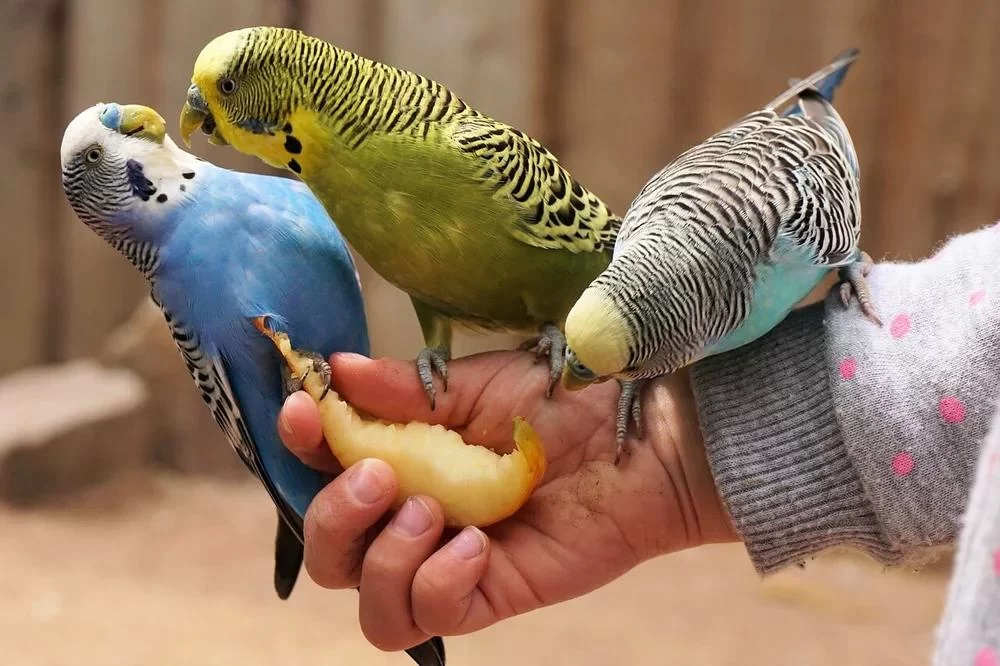- Benefits-of-Homemade-Bird-Treats-for-Parakeets-and-Small-Birds
- Key-Ingredients-for-Nutritious-Bird-Treats
- Step-by-Step-Recipes-for-Homemade-Bird-Treats
- Tips-for-Serving-and-Storing-Bird-Treats-Safely
- Real-Life-Stories-and-Expert-Advice
1. Benefits of Homemade Bird Treats for Parakeets and Small Birds
When it comes to caring for your parakeets and small birds, providing nutritious snacks is just as important as their regular diet. Homemade bird treats for parakeets and small birds offer numerous benefits compared to store-bought options. First, you control the ingredients, ensuring they’re free from artificial preservatives, colors, and additives that can harm delicate digestive systems. Natural treats also support your bird’s overall health, improving feather condition, boosting immune function, and enriching their daily diet.
Furthermore, making treats at home deepens the bond between you and your pet. Birds are intelligent and social creatures that enjoy interaction and stimulation, and crafting personalized treats is a rewarding activity that enhances this relationship. For example, many parakeet owners have noticed their birds responding excitedly to the scent and texture of homemade snacks, which can make training and social time more enjoyable.
1.1 Why Avoid Store-Bought Bird Treats?
Commercial bird treats often contain sugar, salt, or artificial ingredients that may seem harmless but can lead to health issues like obesity, respiratory problems, or vitamin deficiencies. By choosing homemade options, you guarantee freshness and quality, tailoring each batch to your bird’s specific needs, age, and species.
1.2 Supporting Natural Behaviors and Enrichment
Providing homemade treats also encourages natural foraging and chewing behaviors. Birds need mental stimulation, and offering a variety of textures and flavors helps keep them active and engaged. This mental exercise reduces boredom-related behaviors like feather plucking or excessive screaming.
2. Key Ingredients for Nutritious Bird Treats
Choosing the right ingredients is the cornerstone of successful homemade bird treats. The best treats combine nutrition, safety, and palatability.
2.1 Seeds and Grains
Seeds such as millet, sunflower (in moderation), and flaxseed provide healthy fats and energy. Whole grains like oats, quinoa, and brown rice add fiber and essential nutrients that support digestion and overall vitality.
2.2 Fruits and Vegetables
Fresh fruits and vegetables are vital for vitamins and antioxidants. Parakeets and small birds particularly enjoy apple slices, carrots, spinach, and berries. Avoid avocado, onion, and garlic, which are toxic to birds.
2.3 Protein Sources
Birds also benefit from protein, which helps maintain muscle and feather health. Small amounts of cooked eggs, legumes, or finely chopped nuts can be included in treats to provide this essential nutrient.
3. Step-by-Step Recipes for Homemade Bird Treats
Creating bird treats at home can be simple and fun. Here are two popular recipes that work wonderfully for parakeets and small birds alike:
3.1 Millet and Veggie Bites
Ingredients: 1 cup millet, 1/2 cup grated carrot, 1/4 cup finely chopped spinach, 1 tbsp honey (optional)
Instructions: Combine millet with grated carrot and spinach in a bowl. Add honey for slight sweetness, but only if your bird tolerates it well. Form small bite-sized balls and place them on a baking sheet lined with parchment paper. Bake at 350°F (175°C) for 10 minutes until firm but not hard. Let cool completely before serving.
3.2 Fruit and Nut Treats
Ingredients: 1/2 cup chopped apple (seeds removed), 1/4 cup crushed walnuts or almonds, 1/4 cup oats
Instructions: Mix all ingredients thoroughly, pressing the mixture into a silicone mold or small tray. Refrigerate for at least 2 hours until firm. Cut into small pieces suitable for your bird’s size.
4. Tips for Serving and Storing Bird Treats Safely
Serving homemade treats should be done thoughtfully to avoid digestive upset or waste. Introduce new treats gradually and observe your bird’s reaction. Portion control is important — treats should never replace a balanced diet but act as supplements or rewards.
4.1 Safe Storage Practices
Store treats in airtight containers in the refrigerator for up to a week. Avoid keeping homemade treats at room temperature for extended periods to prevent mold growth. Always check for freshness before offering treats to your birds.
4.2 Monitoring Your Bird’s Health
Pay attention to any changes in your bird’s behavior, droppings, or weight after introducing homemade treats. Consulting professionals at Hidden Brook Veterinary can provide tailored advice and ensure your pet’s health remains optimal.
5. Real-Life Stories and Expert Advice
Jessica, a parakeet owner from Colorado, shared how homemade treats transformed her bird’s health. After switching from commercial snacks to millet and veggie bites, her parakeet showed improved feather shine and increased activity levels. “It was amazing to see such a positive change,” she says. “Plus, making treats at home gave me peace of mind about what my pet was eating.”
Experts at Hidden Brook Veterinary emphasize the importance of personalized nutrition. They recommend starting with small batches and observing bird preferences and tolerance. Their professional team also suggests occasional nutritional assessments to ensure your bird’s diet remains balanced and beneficial.
In summary, homemade bird treats for parakeets and small birds offer a natural, healthful way to supplement your pet’s diet while enhancing your relationship. With the right ingredients, thoughtful preparation, and expert guidance, you can provide delicious snacks that keep your feathered companions thriving.












